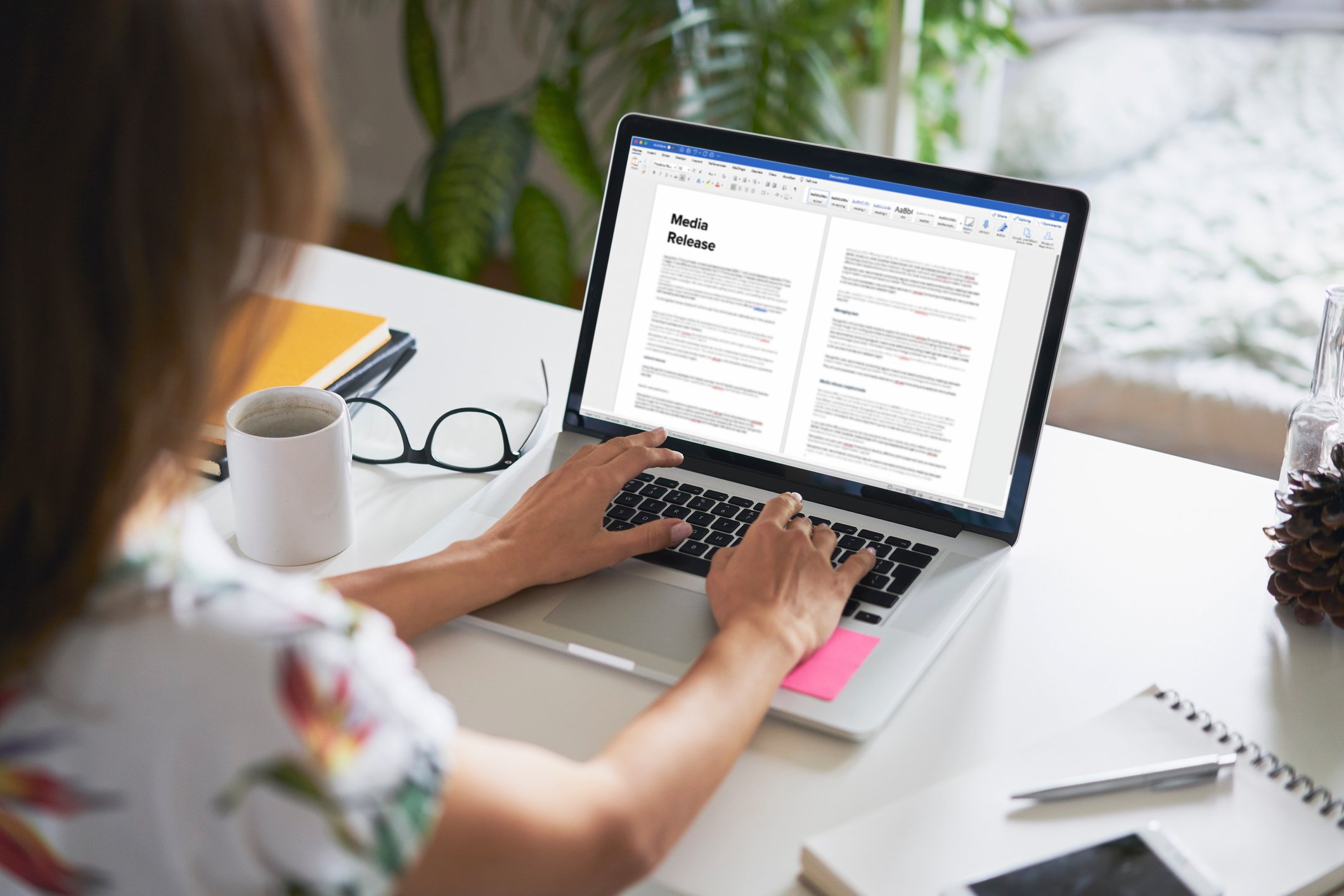Length: 9-minute read.
Quick Summary: Writing engaging media releases is vital for effective PR. This article explores the eight essential tips as well as the don’ts of media release writing to ensure your business stands out.
Writing a media release that works for your business
Australia has a shrinking media market, with time-poor, under-resourced journalists constantly looking for the latest news to capture the interest of their readers. Journalists are flooded with information every day, including more press releases than they have time to read, all competing for their attention alongside breaking news and key industry updates.
We’ve compiled our best tips and tricks from more than 30 years in public relations in the homewares and built environment sector to help you write a media release that gets your information across to the people you want to see it, when you want them to. Read on to learn how to write a media release that works.
What’s involved in writing a media release

Writing a media release is one of the simplest and most effective ways of sharing important company and industry relevant news and information with the media and your customers, both current and future. Given the competition for a journalist’s attention, you need to make sure you write a media release that cuts through the noise. To achieve that, it’s important to know the basics for what makes news and what makes a good media release.
Part of the challenge is knowing what news should be shared with the public. This includes making sure that what you’re sharing is not only new and important but has meaning and impact to the industry or region you’re sharing the information with.
If you’ve determined that your information is timely and newsworthy to the media you want to engage with, then it’s time to write your media release.
There are eight essential features your media release should have to capture a journalist’s attention.
Media release writing: the essential eight

- Write a simple and informative headline: you don’t need to get too clever with your media release headline; that’s a job for subeditors. Summarise your content in a strong headline that explains the importance of the release, in context of any key challenges faced or opportunities that exist in the relevant industry, and the actions or solutions happening. Journalists should be able to understand what the release is about just by reading the headline.
- Write a concise, relevant first paragraph: the strength of your first paragraph (also known as the lede) will determine if a journalist will keep reading. The lede should answer everything a journalist will want to know, including the ‘Five Ws’: who; what; when; where; and why?Your second paragraph gives you the opportunity to respond to the ‘Two Hs’: how; and how much? This includes how your company’s product or service can solve challenges or improve situations and how much money, time, and effort might be involved. You can be creative here, especially when writing for homewares, consumer technology, or built environment audiences.
- Write quotably: give journalists strong, clear sentences and pieces of information they can attribute to your company or your media spokesperson. Make sure your statements are easy to understand so a journalist can rely on them making sense in a story. Remember that journalists can only quote you verbatim, so avoid using “our”, “us”, and “we”; instead, use your company name.
- Quote third parties: include approved, supporting quotes from customers or industry experts where possible as this can add credibility to your story and will enhance the strength of your release. Some brands can benefit from working with celebrity ambassadors who endorse your products or services. However, it’s important to ensure these partnerships are strategic and relevant.
- Keep it short and simple: journalists are pressed for time so announcements should be short and concise. Avoid unnecessary detail and description. Ideally, there will be opportunities for company spokespeople to embellish in interviews if the journalist requires more information.
- Be timely: journalists don’t want to receive old news so, at the very least, it’s important to do a quick search for related news that might have circulated and make sure information doesn’t overlap. It’s also important to make sure that you distribute releases at optimal times such as when journalists aren’t likely to already have a full story schedule. Deadlines are immovable and may be earlier than you think. For example, if you want to be in the Christmas issue of a monthly publication, you’ll need to have your content ready for the journalist by September.
- Be available: journalists like to speak directly to customers and relevant company spokespeople so it’s important to have relevant spokespeople available for interviews as needed. Check they aren’t away or unavailable when you plan to issue a release.
- Include a boilerplate: not every journalist will know who you are or what your company does. Be sure to offer background information about your company at the end of the release, along with contact details. A journalist and their audience will need to know about you and whom to direct potential questions to.
Media release writing: the don’ts

While it’s important to make sure you have all the information you need when writing a media release, it’s equally important to avoid including the things you don’t need.
Don’t use jargon: jargon can alienate journalists and their audience. Not every journalist will specialise in your industry so your media release needs to make sense; a journalist won’t follow up if they have to dig deep to understand industry terminology. Spell out acronyms in the first instance and try to universalise your content and language so it can appeal to a wider audience.
Don’t write ‘for immediate release’: distributing a media release should already imply that it is set for immediate release. Likewise, don’t embargo releases. Embargoes are largely meaningless given the easy availability of information on the internet. Asking a journalist to hold your release information until a certain date is rarely necessary and will just complicate their workload. It’s also important to remember that just as journalists like timely information, they like breaking news.
Media releases are a great way to share news about your business; however, they need to contain newsworthy information that a journalist and their audience would be interested in. Unfortunately, too many businesses fall into the trap of writing a press release for the sake of doing so. Often, businesses may also write a media release when there’s a more effective way to tell the story or get the information across. It’s important to consider the value you’re delivering to the industry and customers when writing a media release and ensure that this is the best way to get your information across to the people that need it.
It seems simple; however, there’s a real art to writing a media release that gets your message across to the right people at the right time.

With more than 30 years of experience in the industry, the team at Write Away Communication PR agency has written and pitched its fair share of media releases to help our customers spread their news. We also offer media training to ensure your media interviews are a resounding success.
For more information on how we can help your business write a media release that gets the cut-through you need to get your brand in front of the right people, at the right time, and in the right way, contact the team today.










